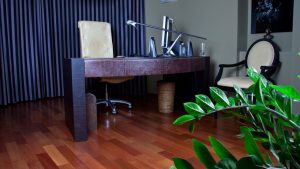Commercial remodels can be difficult. Unexpected access points for plumbing, electrical, or HVAC systems often interfere with design plans. Bulky panels make spaces feel small and ruin the area’s appearance.
Recessed access doors provide a workable solution. They sit flat against walls and ceilings, removing bumps or protrusions. They allow for more usable space and keep a clean look. Maintenance is easy, and style is not compromised.
Recessed access doors integrate necessary utilities well. They improve both the functionality and design of commercial projects.
What Are Recessed Access Doors and Why Are They Important?
Recessed access doors help save space, fit neatly into walls and ceilings, and make it easy to reach building systems. They’re designed to blend in and play a key role in construction.
What Is a Recessed Access Door?
A frame is installed within the wall or ceiling opening. This frame is typically aluminum or steel. The door panel then aligns perfectly with the adjacent surface. This design produces a seamless appearance. Latch mechanisms, like push-to-release or cam locks, are concealed, contributing to the door’s sleek and modern style.
Key Features and Benefits
- Space Optimization: Big plumbing panels can make a small restroom feel tight. Recessed doors change that. They create a flat wall, making the restroom look more open and nicer.
- Aesthetic Appeal: Picture a retail space with clean, modern lines. Standard access panels interrupt that flow. Recessed doors change that. They disappear into the design and can be customized to match any color or texture. This transforms a simple access point into a design element, enhancing the store’s atmosphere.
- Enhanced Accessibility: Do you know how hard it is to access HVAC ductwork behind those big, heavy panels? It’s a real pain for maintenance techs and wastes time. Recessed doors fix that. They have hidden latches with push-to-release, so maintenance is way faster, and that saves money.
Common Applications
- Plumbing Access in Restrooms and Kitchens: In upscale restaurant restrooms, recessed tile-inlay doors provide concealed access to plumbing while keeping the design’s integrity. This resolves problems with both space and visual appeal.
- Electrical and Data Access in Offices and Retail Spaces: Today’s offices often use recessed metal access panels. These panels allow convenient access to data cables and electrical wiring, which is essential for keeping technology organized, particularly in dynamic office environments.
- HVAC Access in Ceilings and Walls: Large buildings often use recessed drywall inlays in their ceilings. This allows easy access to HVAC systems, simplifies maintenance, and, importantly, doesn’t mess up the building’s design. This helps with managing complex systems.
Space-Saving Benefits of Recessed Access Doors

Commercial spaces benefit from recessed access doors. They save space. Traditional access panels are often bulky. This makes them look bad and function poorly. Recessed doors offer a more effective solution.
Issues With Traditional Access Panels
Standard access panels aren’t flush. They stick out about three to six inches from surfaces, reducing hallway space and adding unwanted visual clutter.
How Recessed Doors Help
Recessed access doors are designed to sit flush, maximizing usable space. Take a small restroom, for example. If you replace a standard 24×24-inch panel with a recessed one, you’ll gain nearly three extra square feet. That makes a significant difference in how the room flows and feels.
Design Suggestions and Product Picks
In tight spaces, tile-inlay doors provide a cohesive look and integrate with existing finishes. Metal panels offer a modern aesthetic for office settings. Recessed doors maximize usable space and positively affect property value and tenant satisfaction. This is achieved through a less bulky design than traditional options.
The Aesthetic Upgrade (From Eyesore to Eye-Catching)
Standard access panels can ruin a room’s aesthetic. They don’t fit well with most designs, and simple metal or plastic panels just look wrong.
Recessed Doors as Design Elements
Recessed access doors integrate smoothly into a space. Drywall inlays allow them to match wall textures. Well-designed metal doors add sophistication. For instance, a matte black door can enhance an industrial setting and add character to a space.
Design Tips and Inspiration
Recessed doors can blend into their surroundings. Treat them like part of the wall or ceiling.
For tiled bathrooms, use tile-inlay doors. In hotel lobbies, cover them with matching wallpaper. This makes them nearly invisible. Match paint and the surrounding’s texture. Use hidden latches for a smooth look.
Concealing these doors is achievable. It’s like making something functional disappear into the design. A well-hidden door improves a space’s look. This can increase property value. Clients will also notice the attention to detail. Recessed doors create a polished, stylish environment. They make access points discreet.
Installation: Not as Scary as It Sounds (But Still Important)
You might think installing recessed access doors is only for experts. That’s not true. It’s like putting together a puzzle. Careful planning leads to superior results. Even beginners can do it. Understanding the basics prevents problems.
Basic Installation Considerations
- Framing and Rough Openings: The frame is key to your installation. Just like preparing a canvas, the rough opening needs to be exact. If it’s too big, you’ll have gaps; if it’s too small, the door won’t fit.
- Clearance and Accessibility: You’ll need to ensure the door opens. Watch out for pipes and wires, which can make things complicated.
- Latch and Locking Options: Consider how secure the door needs to be. A push-to-release latch is sufficient for basic access, but busy areas might need something sturdier and more secure.
DIY vs. Professional Installation
Installing simple drywall inlay doors in non-critical areas is possible for DIY projects. It’s like hanging a picture but requires careful measurements. Complex installations, such as those with metal frames or tile inlays, require professional expertise.
Incorrect installation can lead to leaks and cause structural or safety problems. This type of work has risks, like rewiring a house without electrical knowledge.
Product Selection Guidelines
- Size, Material, and Finish: The door must fit the opening. Additionally, its appearance should align with the surrounding decor.
- Quality and Durability: Avoid cheap doors. They may warp, rust, or break, causing expensive repairs. Choose high-quality doors for long-term savings.
Practical Installation Tips
- Measure twice and cut once.
- Use a level to ensure the door is even. An uneven door is noticeable and annoying.
- Check building codes for fire ratings and access requirements to avoid fines and compliance issues.
- Don’t use too much force. If the door doesn’t fit, double-check the measurements.
Your Remodel’s Secret Weapon (And Your Space’s Best Friend)
Space and functionality are crucial in commercial remodels. Traditional access panels consume valuable space, while recessed access doors offer a practical alternative.
With these doors, you get better layouts and smoother traffic flow, which is important in small commercial spaces. Plus, they make maintenance a breeze, meaning less downtime and more money saved.
During remodel planning, factor in recessed access doors. They offer great durability and simplify maintenance. Partner with experienced contractors to improve space and boost functionality.
Consider recessed access doors a smart investment. They offer more than just an upgrade. They transform cramped areas, create organized, open spaces, provide practical benefits, yield long-term value, and are a beneficial addition to any space.








